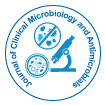

Perspective - (2024)Volume 8, Issue 4
Enterovirus infections are a significant public health concern, causing a wide range of illnesses, from mild respiratory infections to severe neurological and cardiac complications. Early detection of these infections is important for effective clinical management, timely treatmentand prevention of outbreaks. Traditional diagnostic methods, such as viral culture and Polymerase Chain Reaction (PCR), are highly specific but often limited by time constraints, cost and the requirement for specialized equipment. Novel biomarkers offer a potential solution for rapid, accurate and cost-effective early detection of enterovirus infections. This study discusses about the significance of developing novel biomarkers, current advancements in the field and their potential applications in clinical practice.
Limitations of current diagnostic methods
Enteroviruses belong to the Picornaviridae family and encompass over 100 serotypes, including coxsackieviruses, echoviruses and enterovirus D68. They are responsible for a spectrum of diseases such as Hand Foot and Mouth Disease (HFMD), aseptic meningitis, myocarditis and Acute Flaccid Myelitis (AFM). Enterovirus outbreaks can cause significant morbidity and strain healthcare systems, particularly affecting pediatric and immunocompromised populations. While PCR and serological assays remain the gold standard for enterovirus detection, they have inherent limitations:
Time-intensive: PCR requires sample preparation and amplification, delaying results.
Costly equipment: Specialized instruments limit accessibility in resource-poor settings.
Variable sensitivity: False negatives can occur due to low viral load or improper sample collection. These challenges underscore the need for biomarkers that can detect infections earlier and more efficiently.
Advances in biomarker research
Biomarkers are biological molecules that indicate normal or pathological processes or responses to therapeutic interventions. Proteins released during infection. Viral RNA or host gene expression patterns. Metabolic changes induced by viral replication. Ideal biomarkers for enterovirus detection should be highly sensitive and specific. Detectable in easily accessible samples (e.g., blood, saliva, urine). Rapidly measurable using minimally invasive techniques. Cost-effective and scalable for widespread use. Proteins released by infected cells or altered host proteins can serve as biomarkers. Elevated levels in severe enterovirus infections. Indicative of cellular stress during viral replication. Mass spectrometry-based proteomics has advanced the identification of these protein biomarkers, offering insights into the host-pathogen interaction. Next-Generation Sequencing (NGS) and transcriptomics have facilitated the discovery of genetic markers detected in plasma or cerebrospinal fluid, providing direct evidence of infection. Differential expression of immune-related genes, such as interferons and cytokines, serves as an indirect marker. Metabolomic profiling can identify changes in metabolites linked to enterovirus activity. Enteroviruses manipulate host lipid pathways for replication. A result of increased glycolysis during infection. Enable rapid analysis of small sample volumes. Incorporating nanomaterials for real-time biomarker detection with high sensitivity. Improve biomarker identification and diagnostic accuracy by analyzing complex datasets.
Clinical applications of biomarkers
Biomarkers enable earlier diagnosis compared to traditional methods, facilitating timely therapeutic interventions. For example, IL-6 and TNF-α levels can be measured within hours of symptom onset. Certain biomarkers correlate with disease severity, aiding in risk stratification. For instance, elevated HSP levels may indicate severe neurological complications. Biomarkers can track disease progression and treatment efficacy. Persistent viral RNA levels might suggest chronic infection or relapse. Biomarkers offer a scalable tool for monitoring enterovirus outbreaks, particularly in resource-limited settings.
Non-invasive samples, such as saliva or urine, can streamline large-scale surveillance. Biomarkers require extensive clinical validation across diverse populations. Assay protocols must be standardized to ensure reproducibility. Advanced technologies may initially be cost-prohibitive. Bio banking and genetic analyses raise concerns about privacy and data security. Combining biomarkers with portable diagnostic tools for real- time detection. Developing panels to enhance diagnostic accuracy by targeting multiple aspects of the infection. Utilizing biomarkers to customize treatments based on individual immune responses. Encouraging partnerships between researchers, healthcare providers and policymakers to accelerate biomarker development. Developing novel biomarkers for the early detection of enterovirus infections represents a transformative step in clinical microbiology. These biomarkers hold the promise of improving diagnostic accuracy, enabling timely interventions and mitigating the impact of outbreaks. While challenges remain, advancements in proteomics, genomics and metabolomics, coupled with emerging technologies, prepare for a novel era in infectious disease diagnostics. Collaborative efforts will be essential to translate these discoveries into practical solutions, ultimately enhancing patient outcomes and public health.
Citation: Saito K (2024). Developing Novel Biomarkers for the Early Detection of Enterovirus Infections. J Clin Microbiol Antimicrob. 8: 210.
Received: 22-Nov-2024, Manuscript No. JCMA-24-36613; Editor assigned: 25-Nov-2024, Pre QC No. JCMA-24-36613 (PQ); Reviewed: 09-Dec-2024, QC No. JCMA-24-36613; Revised: 16-Dec-2024, Manuscript No. JCMA-24-36613 (R); Published: 23-Dec-2024 , DOI: 10.35248/ JCMA.24.8.210
Copyright: © 2024 Saito K. This is an open-access article distributed under the terms of the Creative Commons Attribution License, which permits unrestricted use, distribution and reproduction in any medium, provided the original author and source are credited.